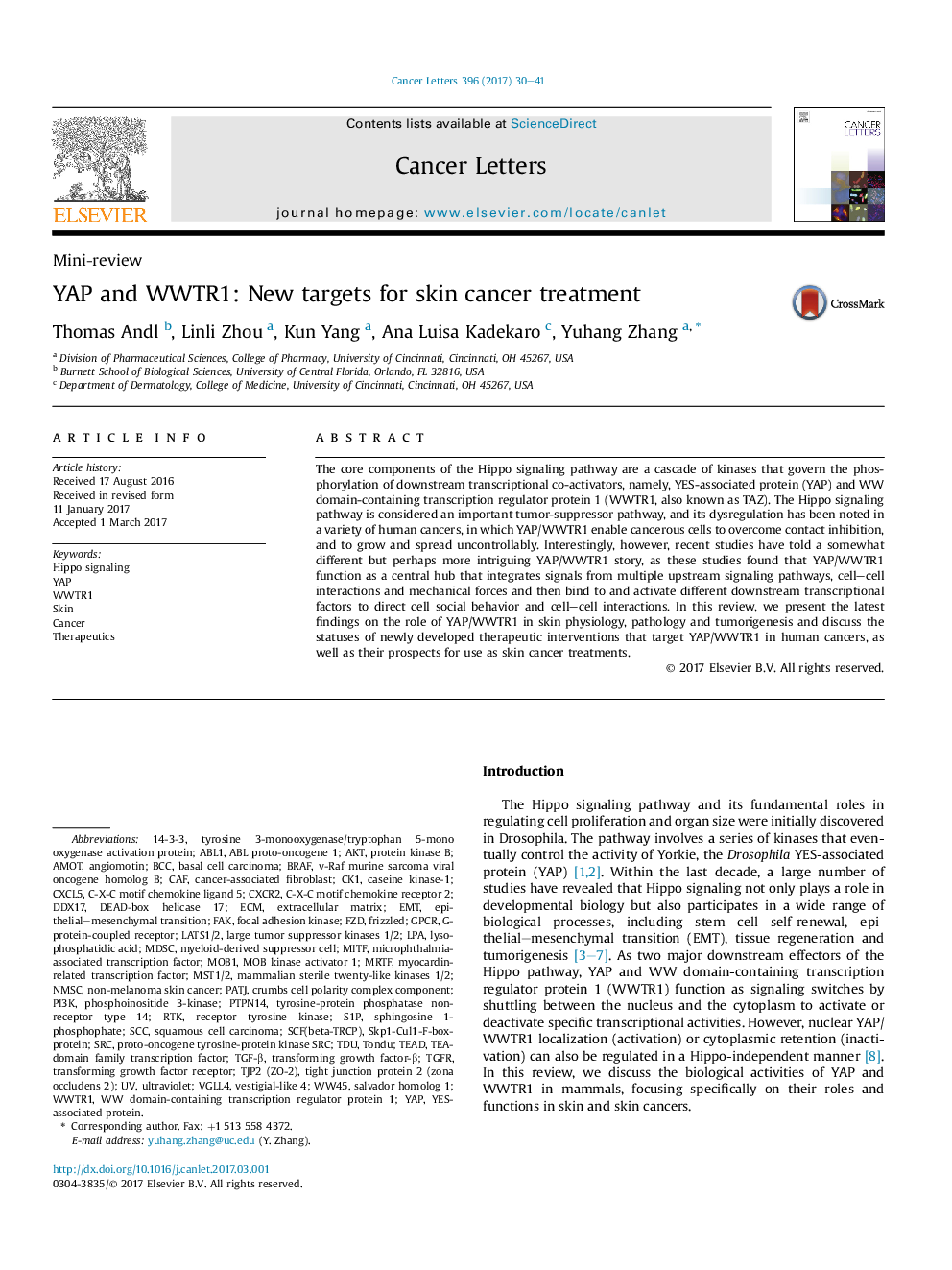| Article ID | Journal | Published Year | Pages | File Type |
|---|---|---|---|---|
| 5525578 | Cancer Letters | 2017 | 12 Pages |
â¢Skin cancer is the most common of all human cancers.â¢YAP and WWTR1 activity are regulated by a complex network of molecules and pathways.â¢YAP1 and WWTR1 contribute to skin cell activity and may play important roles in skin health and skin diseases.â¢The specific oncogenic or tumor suppressor roles of YAP and WWTR1 in skin cancer remain to be further characterized.â¢Targeting YAP/WWTR1 can be achieved at cellular steps that control phosphorylation, translocation, and transcription.
The core components of the Hippo signaling pathway are a cascade of kinases that govern the phosphorylation of downstream transcriptional co-activators, namely, YES-associated protein (YAP) and WW domain-containing transcription regulator protein 1 (WWTR1, also known as TAZ). The Hippo signaling pathway is considered an important tumor-suppressor pathway, and its dysregulation has been noted in a variety of human cancers, in which YAP/WWTR1 enable cancerous cells to overcome contact inhibition, and to grow and spread uncontrollably. Interestingly, however, recent studies have told a somewhat different but perhaps more intriguing YAP/WWTR1 story, as these studies found that YAP/WWTR1 function as a central hub that integrates signals from multiple upstream signaling pathways, cell-cell interactions and mechanical forces and then bind to and activate different downstream transcriptional factors to direct cell social behavior and cell-cell interactions. In this review, we present the latest findings on the role of YAP/WWTR1 in skin physiology, pathology and tumorigenesis and discuss the statuses of newly developed therapeutic interventions that target YAP/WWTR1 in human cancers, as well as their prospects for use as skin cancer treatments.
